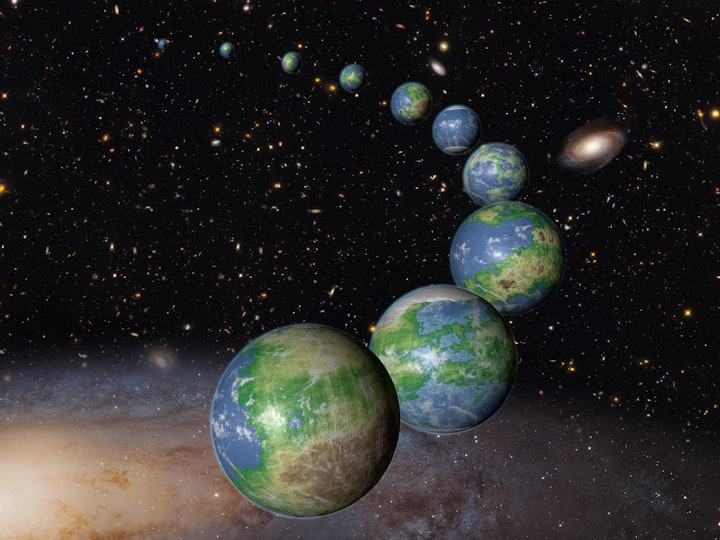'Nature-Culture': Embracing Genetic Modification
How GM May Be Humanity's Only Source of Progress in an Unsustainable Present

From unprecedented globalisation to industrial refuse, the contemporary world has changed the face of the earth, prompting geologists to define it as the Anthropocene, “the age of humans” (Purdy, 2015: 1). Jedediah Purdy elucidates that as “a driver of global change, humanity has outstripped geology,” eliciting tensions and anxieties toward future conditions of the earth (Purdy, 2015: 1). Science fiction illustrates these feelings in futuristic stories, usually situated in a post-apocalyptic world where a revelation often portends that worse conditions await regarding environmental sustainability and human lives. Molly Wallace argues that such fictions intend to “suggest that the means to the apocalyptic futures are already in the works and […] to prevent the outcome imagined” (Wallace, 2016: 98). Science fiction accentuates present conditions in an imaginary future, resonating with Fredric Jameson’s claim that science fiction does not aim to “give us ‘images’ of the future […] but rather to defamiliarize and restructure our experience of our own present” (Jameson, 1982: 151). By positioning the present in unfamiliar contexts, one is able to dissociate from the present and thus gain a broader perspective, encouraging the chance to take preventative actions against the depletion and devastation of the earth. Perceived as both preventative and aggravating, genetic modification often features in science fiction novels, either as a necessary action to enable human survival or as a man-made evil that inevitably becomes humanity’s downfall.
Genetic modification is when one organism’s genes is moved into another. Also referred to as genetic engineering, it has been controversial since its inception. Herbert Gottweis claims: “Even before specific techniques became available in the 1960s, the term ‘genetic engineering’ gained currency, denoting the deliberate and controlled modification of genetic material” (Gottweis, 1995: 134). Gottweis continues to outline how genetic modification was considered the popular direction to take in science during this time. Contemporary critical discussions surrounding genetic modification range from hopeful mastering of evolution to horror and fear of unknown consequences. Anne-Lise François highlights how genetic modification within capitalist modes of production contribute “to a paradox of simultaneous overproduction and widespread starvation”, indicating that genetic modification is not harmful by itself, only under the governance which controls it (François, 2003: 44). Such control influences the perception of genetic modification, as Wallace argues that the “‘unknown’ of genetic engineering is […] processed through the ‘known’ of existing moral, ethical, and philosophical belief systems” (Wallace, 2016: 102). The way in which genetic modification is marketed influences society’s perception of it, such as “Frankenfoods” used to describe genetically modified foods. François emphasises the power in such terms, for instance the difference in using genetic engineering, which “evokes the spectre of a purely calculative reason that leaves nothing to chance”, or genetic modification, which evokes a “gentle transformation […] traditionally associated with agriculture and culture in general” (François, 2003: 46-7). This marketing strategy is used by both critics and supporters of genetic modification. Critics often argue that nature cannot be controlled and to do so will wreak havoc on the natural order, while supporters claim that genetic modification will fill the lack left by crop failures due to climate change.
Genetic modification is unknown to the public, as Wallace states, and is often situated as nature’s opposite, indicating that man-made things do not classify as nature. Nature, however, is so ubiquitous that it is difficult to define as one thing, as it has become a “nature-culture”, Bruno Latour’s term for the merging of the man-made and self-made (Latour, 1993: 7). He explains that “the discourse of the ecosphere is too real and too social to boil down to meaning effects”, connoting the unavoidability and irreversibility of nature and culture fusing, which becomes the naturalised mode of perceiving the environment (Latour, 1993: 6). Regarding this intermixture, Jill Didur notes how geneticists understand “human/plant identity as essentially hybrid, the result of a dialogue between nature and culture” (Didur, 2003: 101). Providing there is human interaction with nature, the fusion of nature and culture will persist. The defamiliarizing and uncanny role of science fiction accentuates “nature-culture”, for instance incorporating anthropomorphic androids and animals. Such accentuation reaffirms Jameson’s statement that science fiction depicts the present, emphasising the current pervasive influence of “nature-culture,” while problematising critical arguments against genetic modification since it is merely the fusing of one organism with another, creating yet another “nature-culture.”
Didur, Jill, “Re-embodying Technoscientific Fantasies: Posthumanism, Genetically Modified Foods, and the Colonisation of Life”, Cultural Critique (2003), 98-115.
François, Anne-Lise, “‘O Happy Living Things’: Frankenfoods and the Bounds of Wordsworthian Natural Piety”, Diacritics (2003), 42-70.
Gottweis, Herbert, “Genetic Engineering, Democracy, and the Politics of Identity”, Social Text (1995), 127-152.
Jameson, Fredric, “Progress versus Utopia: Or, Can We Imagine the Future?”, Science Fiction Studies (1982), 147-158.
Latour, Bruno, We Have Never Been Modern, trans. Catherine Porter (Cambridge, MA: Harvard University, 1993).
Purdy, Jedediah, After Nature (Cambridge, MA: Harvard University, 2015).
Wallace, Molly, Risk Criticism (Michigan: University of Michigan, 2016).
About the Creator
Harriet Weston
Writer with an interest in sci-fi and contemporary issues.






Comments
There are no comments for this story
Be the first to respond and start the conversation.